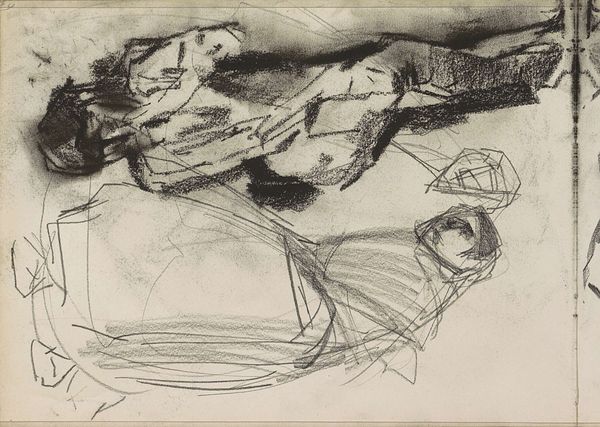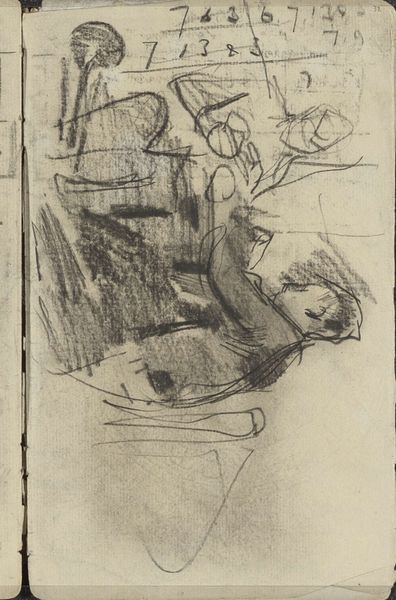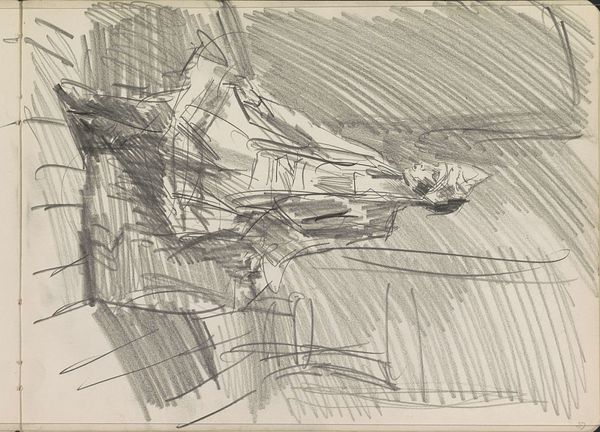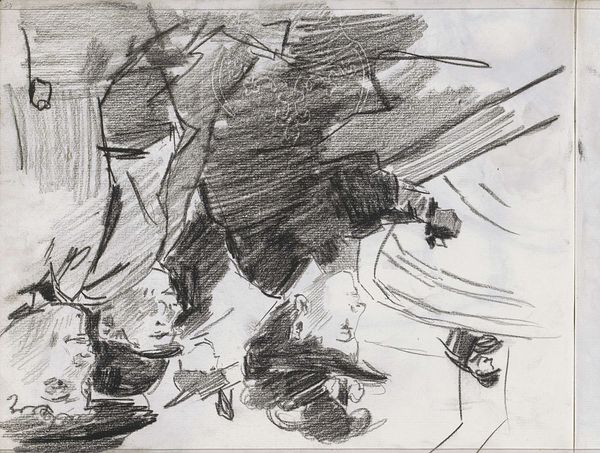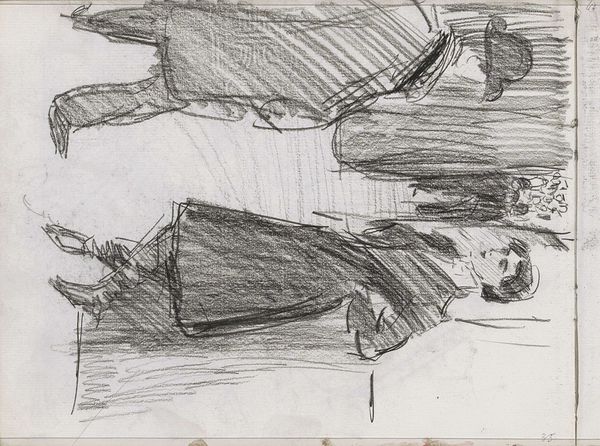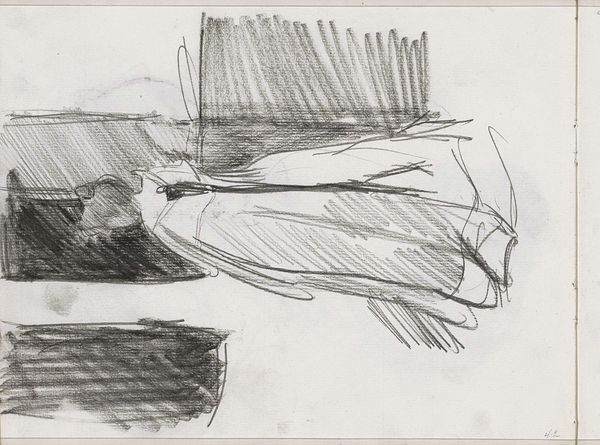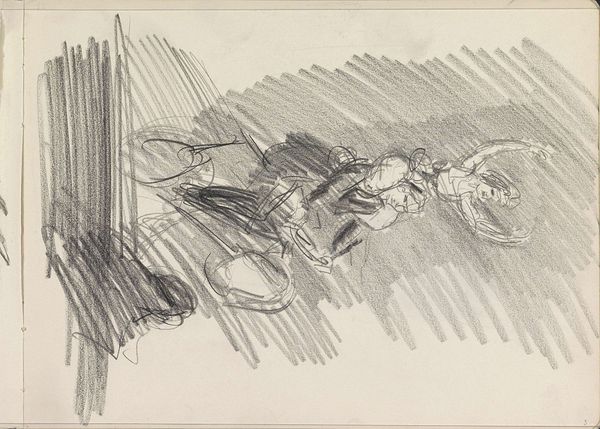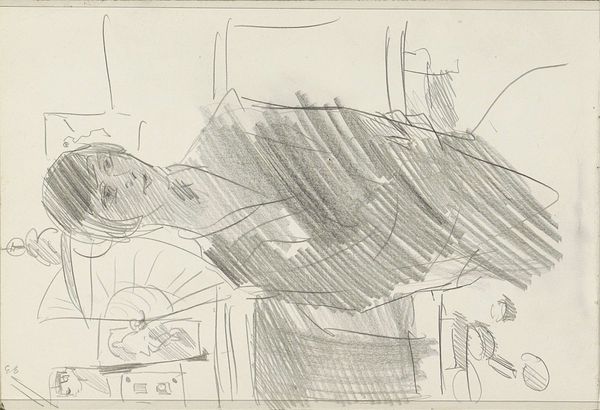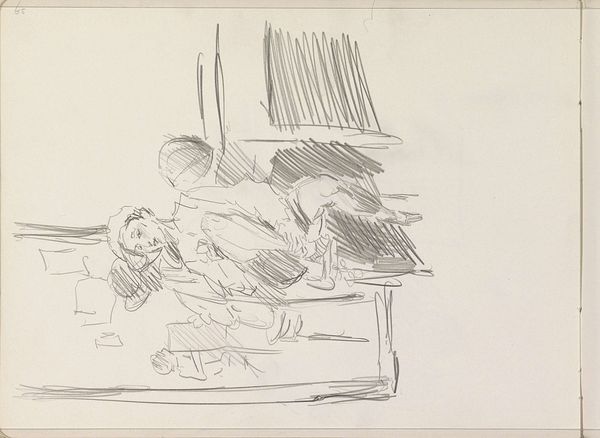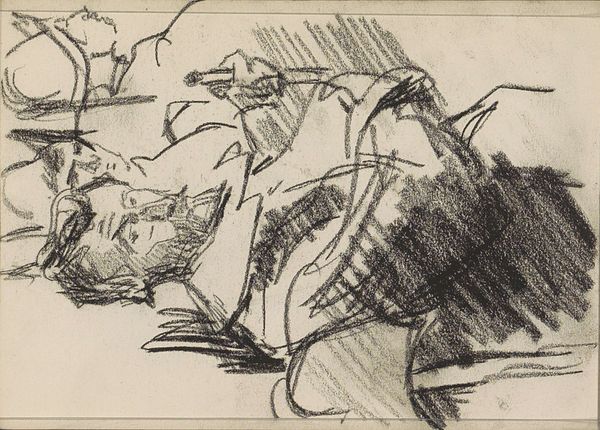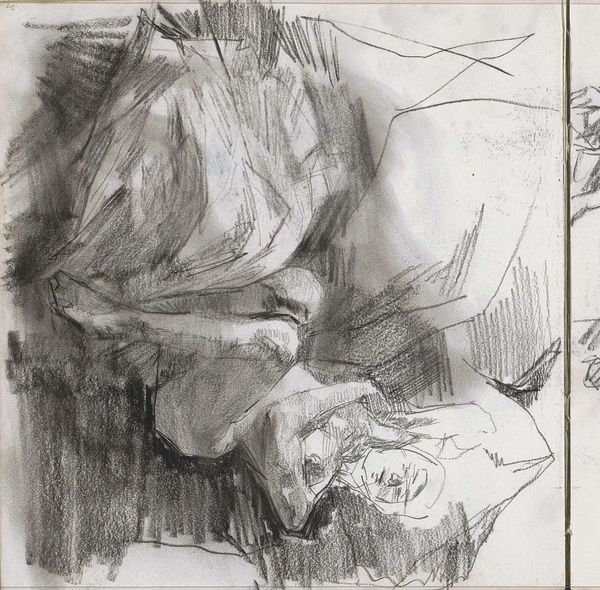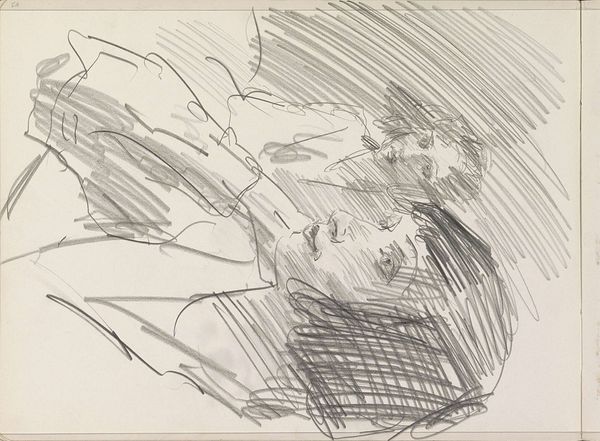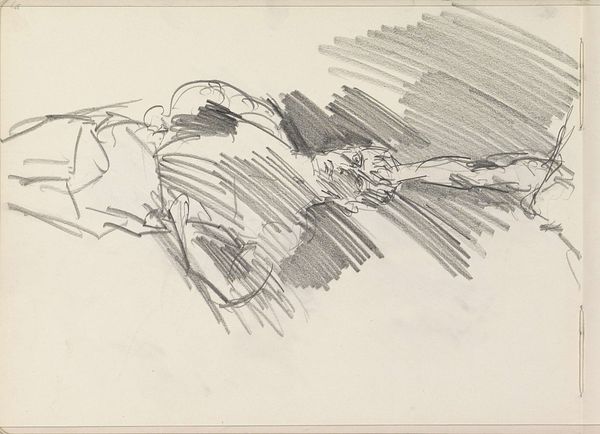
Copyright: Rijks Museum: Open Domain
Curator: Here we have Isaac Israels’s “Dancer Beside a Seated Man,” a pencil drawing created sometime between 1875 and 1934. It’s currently held at the Rijksmuseum. Editor: It has an intimate, almost voyeuristic quality. The figures are captured in a seemingly unguarded moment. The contrast between the detailed faces and the hastily sketched bodies creates an interesting tension, like a memory half-formed. Curator: Israels was, of course, a keen observer of modern life. The recurring image of the dancer appears as a vital sign of urbanity, often connected with ideas of transience and labor. Consider Degas' dancers – a similar world, albeit one made in pastel. Editor: Yes, but whereas Degas feels calculated, meticulously planned, this drawing conveys spontaneity. It feels as if Israels quickly captured a stolen glance at a performer in her downtime. How might the male figure factor into this narrative? Is he an audience member, perhaps a benefactor? Or does he represent something else entirely, maybe the controlling forces at play within this artistic landscape? Curator: The man's posture – slumped, perhaps weary – might symbolize the inherent strain of artistic endeavor. Note that dancers occupied an ambiguous space. While celebrated on stage, they often faced societal scrutiny off stage, navigating precarious economic and social conditions. In a way, the fatigue of the male figure becomes secondary, because of her presence. Editor: Exactly! There’s an implicit power dynamic visualized in her placement. Despite the man’s relative size and grounding in the composition, it is the dancer who possesses that spark of liveliness, who commands our gaze. How might this drawing, therefore, speak to evolving gender roles and women finding agency within a shifting cultural landscape? Curator: Fascinating questions, I wonder whether that reading holds up when considering Israels' overall output; or perhaps Israels captured something prescient here about a dancer's capacity to negotiate and to possibly overcome those societal hurdles. Editor: That balance of agency, captured in a single sketch... that is the power of art. Curator: It certainly gives one plenty to consider.
Comments
No comments
Be the first to comment and join the conversation on the ultimate creative platform.
